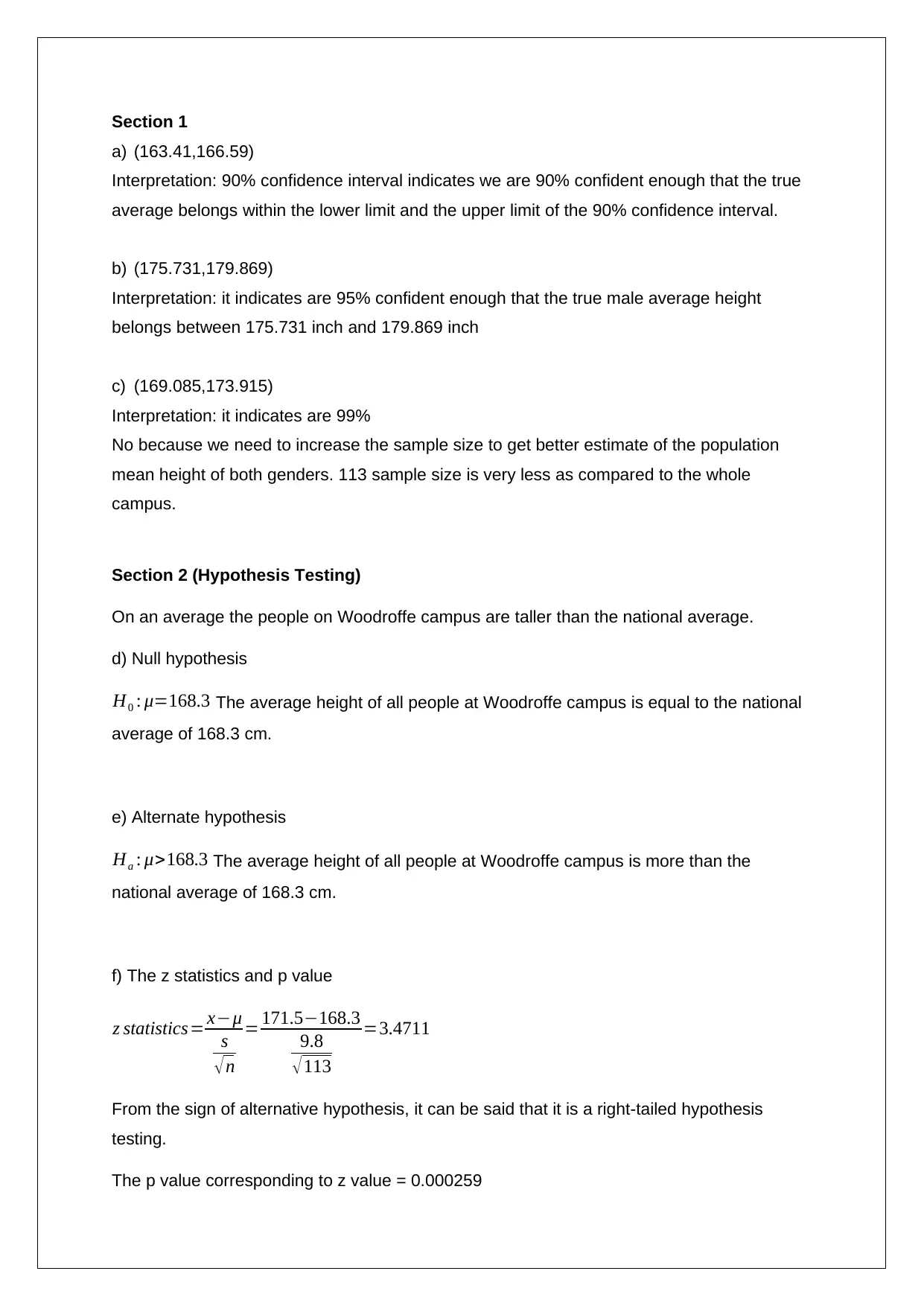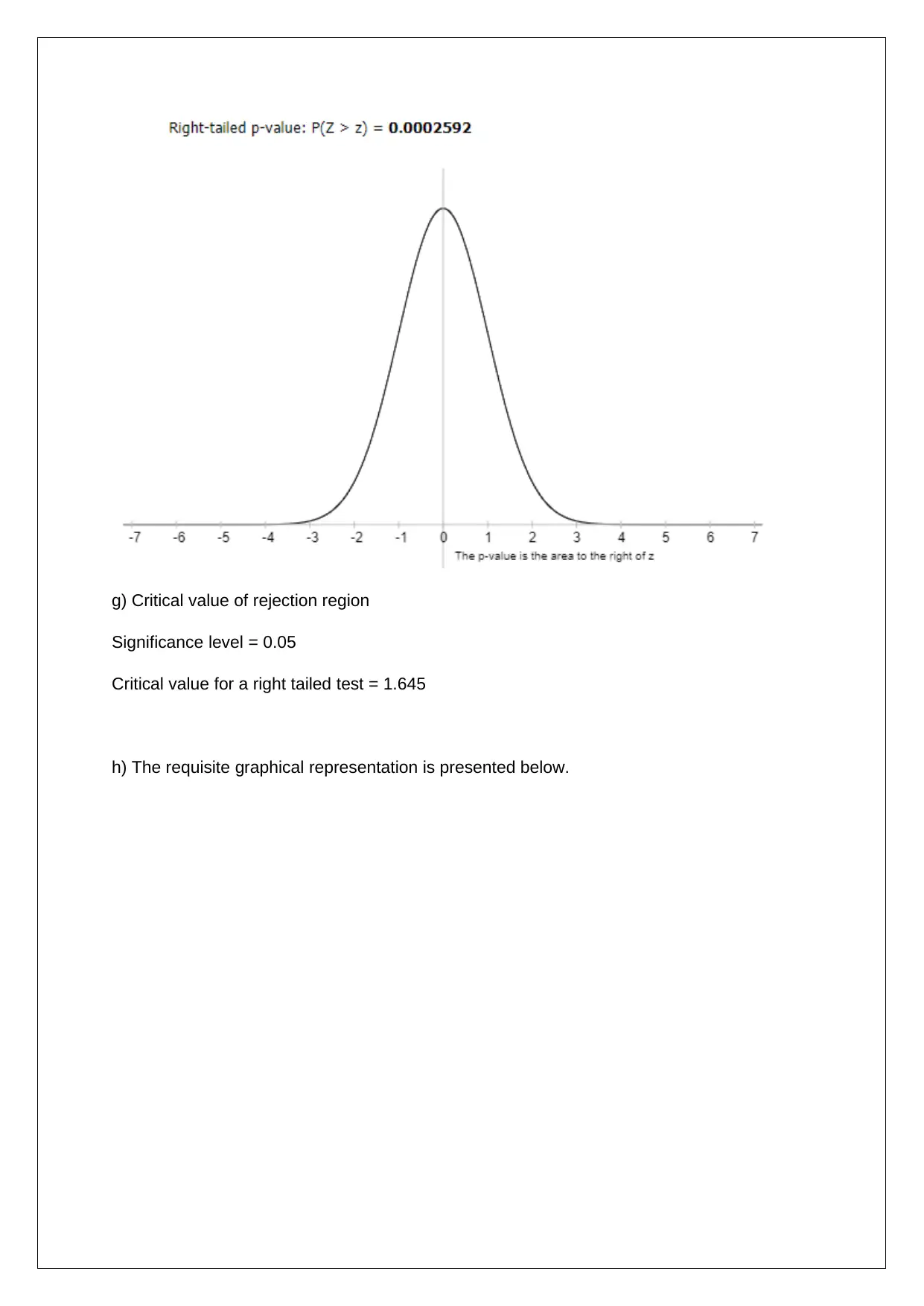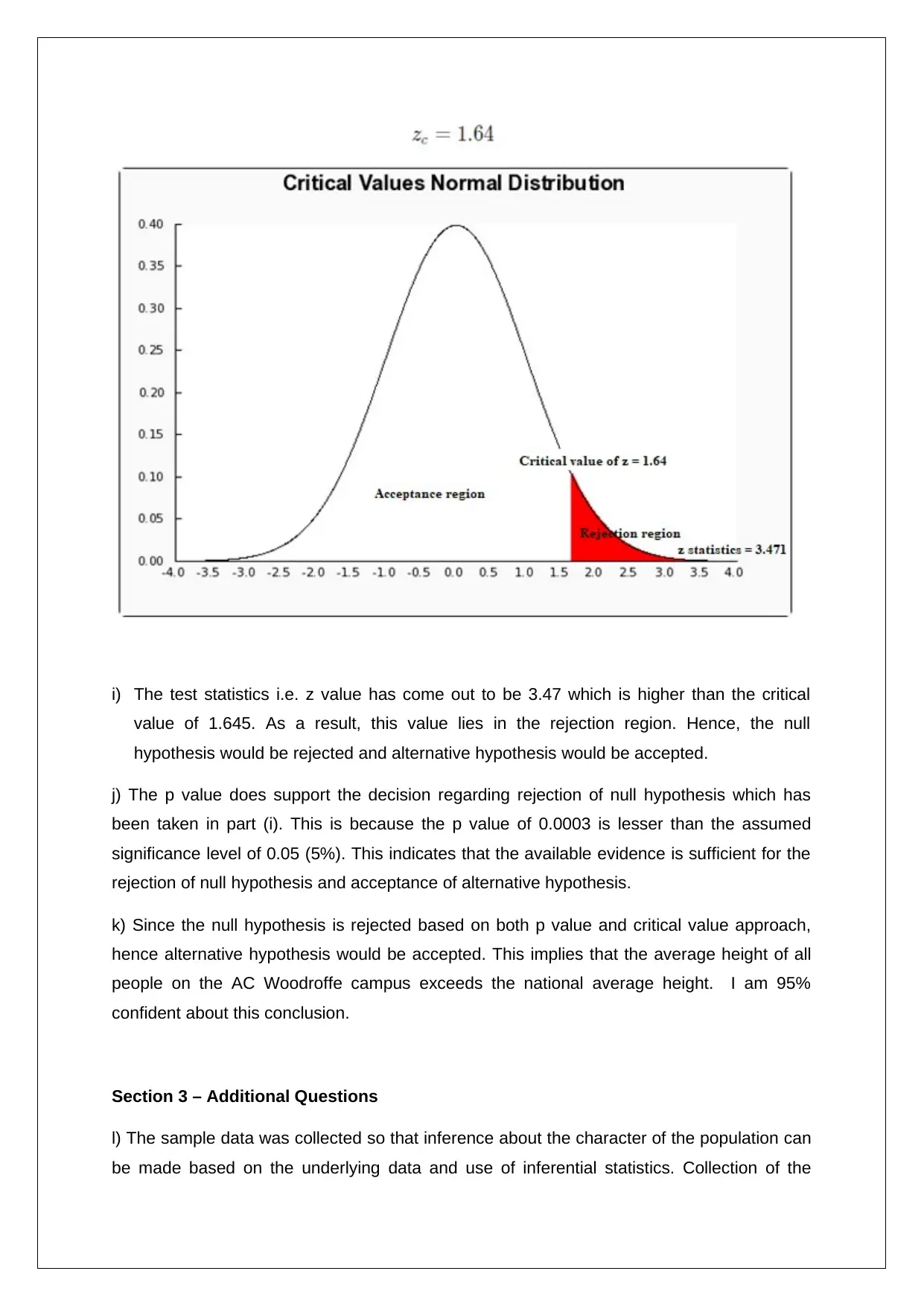Statistics Assignment: Confidence Intervals & Hypothesis Testing
VerifiedAdded on 2022/09/18
|5
|646
|24
Homework Assignment
AI Summary
This statistics assignment provides a comprehensive analysis of height data using confidence intervals and hypothesis testing. The solution includes the interpretation of 90%, 95%, and 99% confidence intervals, evaluating the impact of sample size on the accuracy of population mean estimates. The assignment delves into hypothesis testing, formulating null and alternative hypotheses regarding the average height of individuals on the Woodroffe campus compared to the national average. It calculates the z-statistic and p-value, determines the critical value for rejection regions, and provides a graphical representation of the hypothesis test. The solution demonstrates how to reject the null hypothesis based on both the p-value and critical value approaches, concluding that the average height on the Woodroffe campus exceeds the national average with 95% confidence. Additionally, the assignment explains the rationale behind using inferential statistics with sample data and emphasizes the importance of random sampling to avoid bias and ensure a representative sample. The solution justifies the use of z-statistics over t-statistics due to the large sample size, aligning with the Central Limit Theorem. Overall, the assignment offers a detailed statistical analysis, covering key concepts and methodologies for data interpretation and hypothesis validation.
1 out of 5











![[object Object]](/_next/static/media/star-bottom.7253800d.svg)